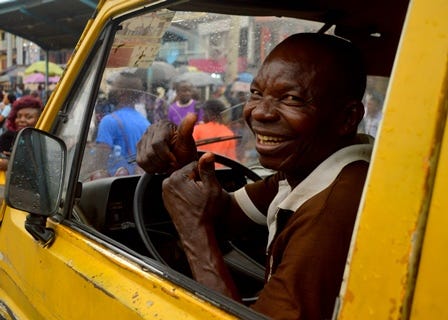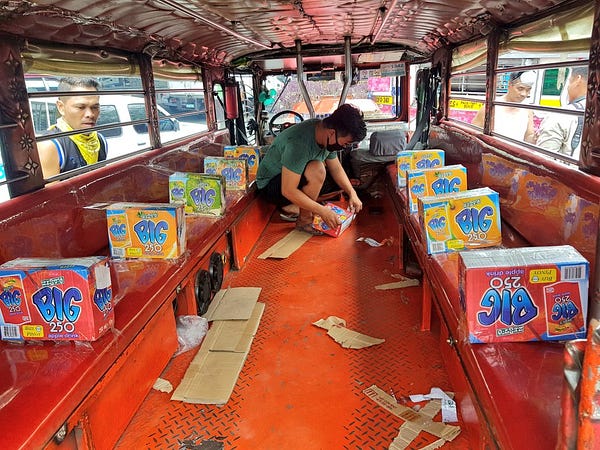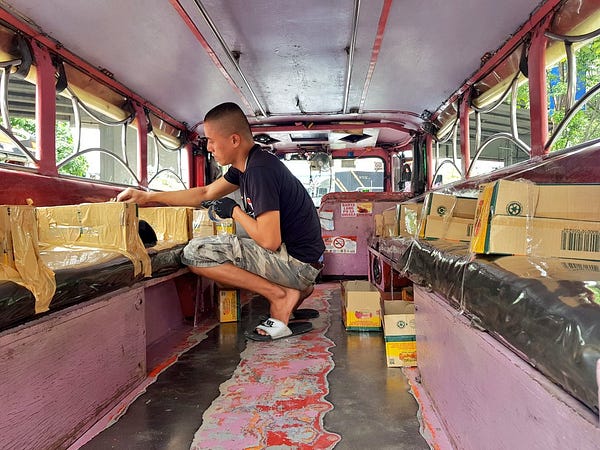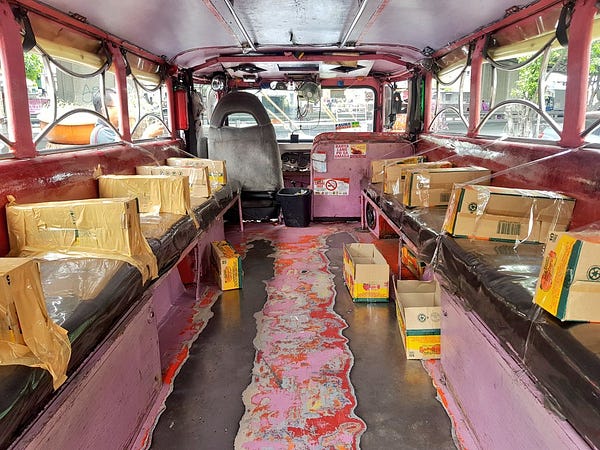
Danfo Driver by Fachab
So, how’s it going? Hopefully you are suffering from nothing more than the discomfort of staying home as your city/state/country works to flatten the curve. Hopefully none of the people you love or know have gotten sick.
Every week during this pandemic feels like a lifetime. Already a third of the world’s population is under lock down or some form of enforced quarantine. And yet, we still don’t know how the world emerges from this pandemic (or what the world will look like, post pandemic.)
It’s tempting to say that this pandemic and the horrific death toll is a “great equalizer,” to imagine that the poor and the elite are equally vulnerable to catching the virus.
Nothing could be further from the truth.
In my last letter, I shared how cities dependent on informal transportation were handling the pandemic. TL;DR, not so well. Lagos just impounded 400 danfos for violating their social distancing guidelines. That means at least 400 danfo drivers and 400 conductors (along with touts) just lost their livelihoods.
This is a health crisis AND an economic crisis. Because they are informal wage earners, danfo drivers and conductors are doubly, even triply at risk. Same goes for drivers of tro-tros, colectivos, matatus, cyclos, motodubs, etc.
Danfo drivers in Nigeria earn close to $1,500 a year (apparently, more than nurses in Lagos). While that is not income to get rich on, it does keep the driver’s family well above the poverty line. That is, until they get hit by an economic shock.
Even if their local authorities don’t confiscate their vehicles or mandate a full shut-down of all transportation, the lock down does mean substantially less or no passengers.
No passengers = no income = economic shock.
They also risk falling through the cracks of economic stimulus packages. Packages which will likely be distributed either through employers’ wage rolls (for salaried workers) and through conditional cash transfers, a.k.a. CCT programs where they have it, for the poor.
Makeshift mobility drivers are usually not on a formal payroll and may not be “poor enough” to be on the CCT list so those stimulus packages could very easily skip them.
Let’s hope the rest of the world follows Chile’s lead. They just created a $2B fund to support their country’s informal workers. I assume they’ll also cover drivers of taxi colectivos and minibuses.
(For a good understanding of how COVID-19 economic rescues are failing informal workers, catch this episode of WIEGO’s Informal Economy podcast with Sally Roever. For the record, I heart WIEGO. They do amazing, amazing work. But, unfortunately, they don’t cover informal transportation workers in this podcast, neither do they conduct much research in the space. At least, not yet. I hope we can change that, someday soon.)
Danfos, matatus, moolah
The owners of makeshift mobility services aren’t doing too well either. Owning a danfo isn’t going to make you spectacularly rich, but it can be a reliable investment, or at least some posters in this 2013 forum say so. Reliable that is if you contract a trustworthy driver.
The same goes for the danfo’s cousin in Kenya. According to this post from Pesaconsult, dated May 2018, owning a matatu can be “very lucrative and can generate good cash flow every day.”
Matatu business is one of the most profitable transport investments but its reputation has suffered due to all manner of negative news and publicity. Stories of police crackdowns, operational accidents, bribes etc have not helped either.
With all these negative news and publicity, matatu business still remains profitable. What you need to appreciate is that it is a very expensive business and requires massive capital to properly set up and operate.
Pesaconsult says you need about KS 3M (USD 28,300) to start a matatu business
Creative to the core
But where they can, makeshift mobility operators are being creative. Jeepney drivers in the Philippines are using boxes to enforce social distancing. So they can still make their routes and take home some income.




Translation: “LOOK: In Manila, to ensure that they can follow “social distancing” in jeepneys, the drivers are installing their own makeshift spacers in the seats.”
A couple of must-reads
A few last plugs. Don’t miss two excellent pieces:
Jarrett Walker in Citylab talks about the true role of transit:
The goal of transit, right now, is neither competing for riders nor providing a social service for those in need. It is helping prevent the collapse of civilization.
What’s more, transit has always been doing that. Those “essential service” workers, who are overwhelmingly low-income, have always been there, moving around quietly in our transit systems, keeping our cities functioning. Too often, we have patronized them by calling them needy or dependent when in fact everything would collapse if they couldn’t get to work.
Kevin Rogan in Failed Architecture talks about how coronavirus unveils the two New Yorks:
Similarly to how the driver of a car likely doesn’t think about the assembly-line labor, technical expertise, and massively distributed regimes of extraction which make his driving possible, exhortations that we all find community now can only make sense if one ignores the bloody hierarchy and urban divisions that undergird it. Like the virus itself, quarantine is presented as a great leveller, sweeping through and affecting all alike. In actuality, it has caused urban life to fracture even further, splitting New York City into two cities: one which is occupied solely by workers toiling silently in back kitchens and fulfillment centers, and another utterly dependent on the first. The second city is free to take their work home, and even flee the city altogether, waiting neurotically for it all to blow over, and for normality to return.
That’s it for this week. Stay home, if you can, and stay safe.
I’m Benjie de la Peña, a transport geek and urban nerd. I‘m sheltering-in-place in Seattle where school is cancelled for the rest of the year and cat sitting is now 24/7. I think a lot about strategic design, institutional shifts, and innovation. I believe makeshift mobility could be the single greatest lever to decarbonize the urban transport sector -but only if we can organize.



